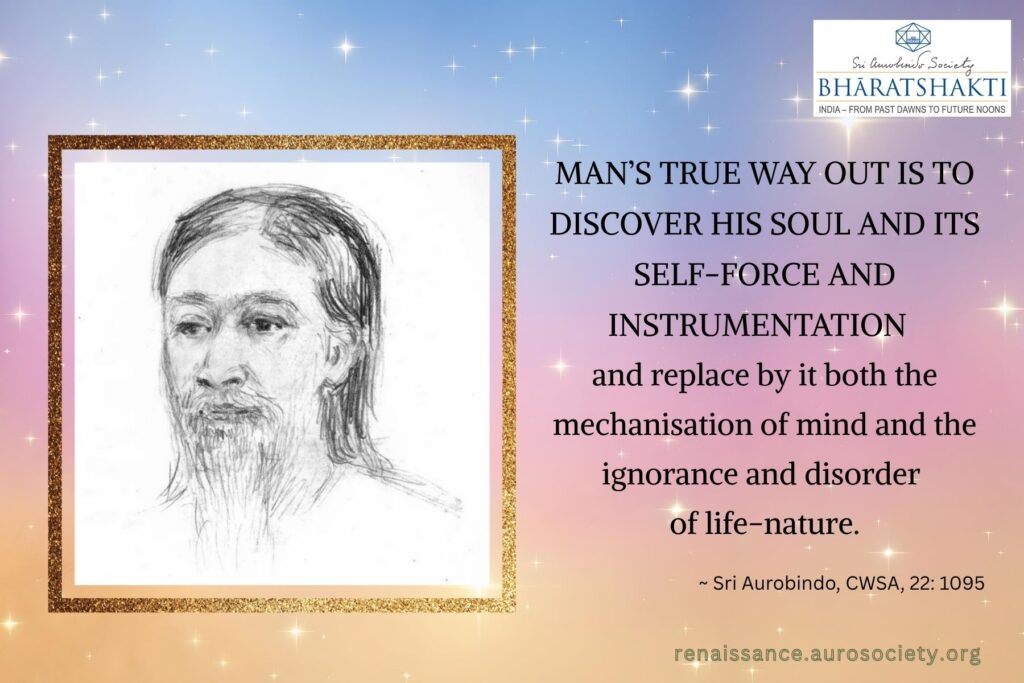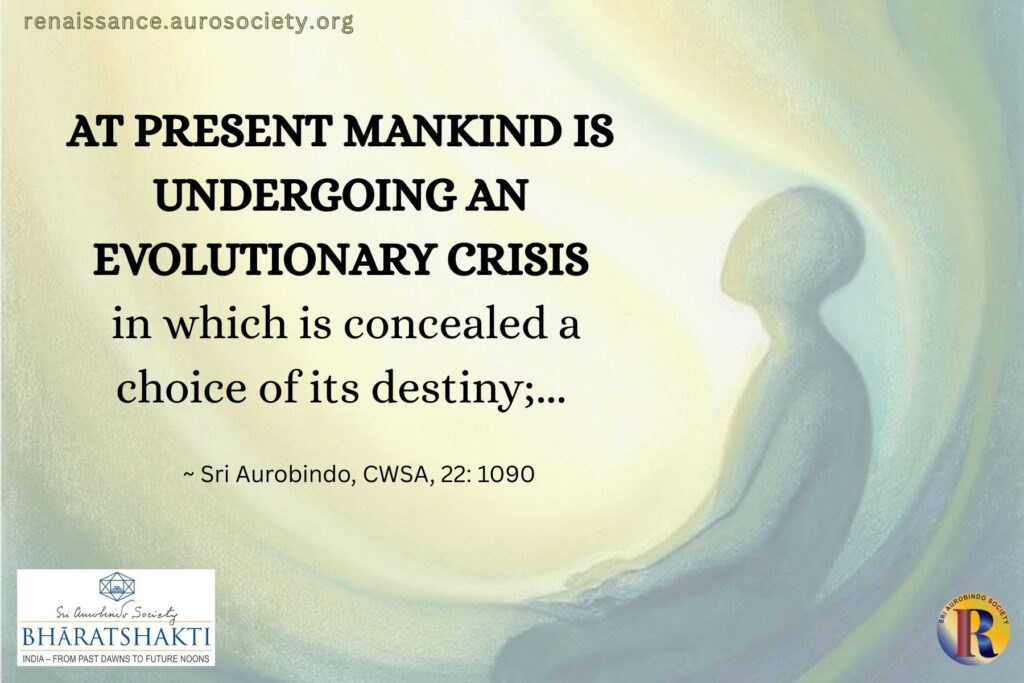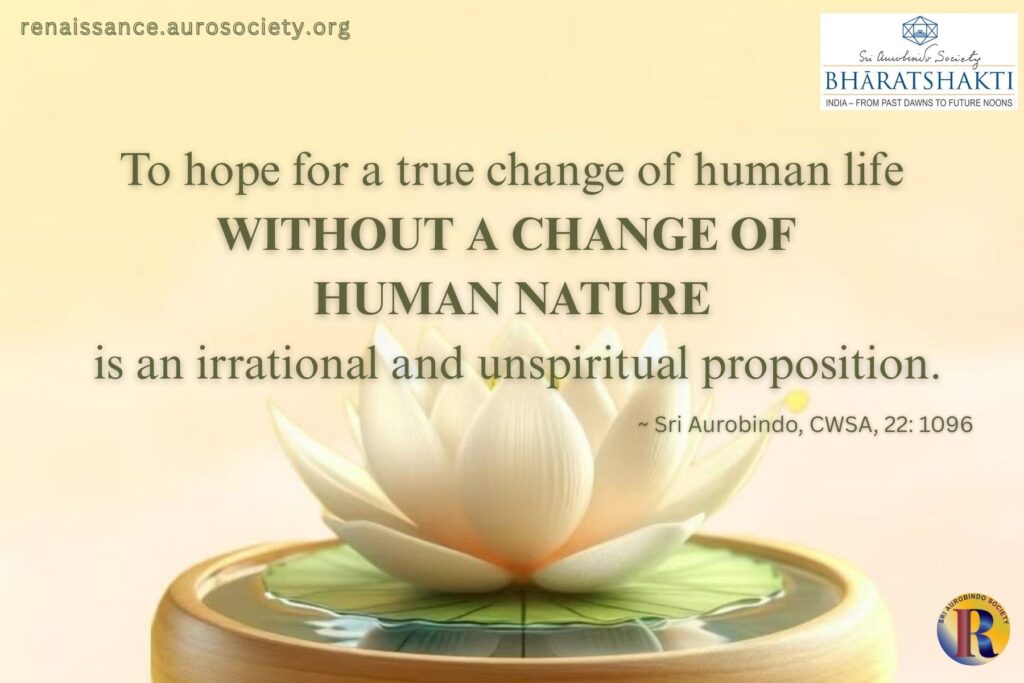Volume VI, Issue 10
Author: Ramesh Bijlani
Editor’s Note: Sri Aurobindo once wrote that the modern scientist, being focused only on the physical method of discovering the truths of existence in the phenomena, tried to make a complete scheme and institution of the scientific method. But he stayed blind to the miracle involved in each kernel of existence, a deeper truth hidden behind the veil of a vast ordered outer phenomenon.
“But always the marvel of the thing remains, one with the inexplicable wonder of all existence,—even as it is said in the ancient Scripture,
āścaryavat paśyati kaścid enam,
āścaryavad vadati tathaiva cānyaḥ;
āścaryavac cainam anyaḥ śṛṇoti,
śrutvāpyenaṁ veda na caiva kaścit. (Bhagavad Gita, 2.29)“One looks on it and sees a miracle, another speaks of it as a miracle, as a miracle another hears of it, but what it is, for all the hearing, none knoweth.” (CWSA, 13: 317-318)
Owing to the developments in the field of Quantum Physics and other areas, Science now acknowledges the transcendental dimension of existence, thereby confirming what the Mystics have said since ages. Sri Aurobindo emphasises that after all the advancement humanity has made in the material domain, the next state in the human progress is definitely a spiritual and psychical advance. Thus it becomes essential that more and more sections of humanity develop an inward orientation to seeking truth.
This necessitates nurturing and cultivating an innate sense of wonder and deeper quest for knowing the hidden truths of existence and life. This is the work we must do to prepare ourselves as collaborators in the work of bringing a new age based on the New Spiritual Ideal that Sri Aurobindo and the Mother have given us.
With this in consideration, we feature here a book review by Dr. Ramesh Bijlani from Sri Aurobindo Ashram, Delhi Branch. He reviews the book titled ‘The Religion of Wonder‘ by Narendra Murty. This review was first published in The Call Beyond, vol. 50, no. 4 (April 2025) and is being republished here with their permission.
About the Reviewer
A retired Professor of Physiology, Ramesh Bijlani is not only a highly accomplished medical scientist but also a prolific writer and inspirational speaker. He is the author of more than 200 scientific papers (57 listed on PubMed), more than 50 popular articles, more than 250 blogs on Speaking Tree, and more than 25 books for experts and the general public, for adults and children, on a wide variety of subjects, such as physiology, nutrition, research methodology, education, lifestyle diseases, yoga and spirituality.
His writings on yoga and spirituality are based on the Integral Yoga of Sri Aurobindo and the Mother. His books include a 1000-page textbook for medical students and teachers, Understanding Medical Physiology (2004), and a 32-page picture book for 5- to 8-year-olds, Our Body: A Wonderful Machine (1986), which was the best selling title published by the National Book Trust for the decade 1995–2005.

Book Details:
Title: The Religion of Wonder
Author: Narendra Murty
Publisher: AuroPublications, Sri Aurobindo Society, Pages 88
ISBN: 978-81-7060-452-5
Click to buy
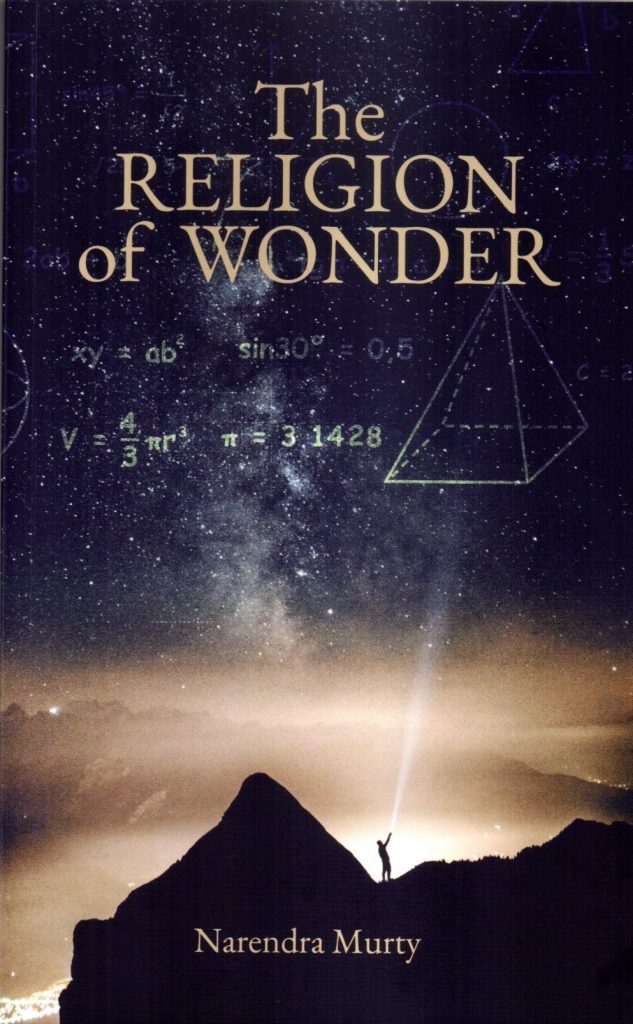

Book Review
Narendra Murty, a voracious reader all his life, recently turned into a prolific writer. Good for all of us because now we have access to the wisdom he has accumulated through decades of extensive reading. The Religion of Wonder encapsulates in a slim volume the history of religions, right from prehistoric times to the present but does not stop there; it also gives a glimpse into the author’s logical vision of the future. Here is history, not as a chronicle of events, but as a story that is as educative as it is absorbing, exactly as history should be taught in schools.
The author might have been inspired to write this book by Sri Aurobindo’s work, The Human Cycle. But The Religion of Wonder is not only far more approachable because of both its simplicity and size, but it also has much that is the result of the author’s extensive reading and reflection.
The book starts with the beginnings of religion, which were possibly rooted in the way man viewed the world around him. He found the world “enchanting.” He wanted to influence this world, but failed. From this he concluded that the world was governed by supernatural beings. Man’s naïve belief that these supernatural beings could possibly be influenced by “praise, flattery or entreaties” was perhaps the beginning of worship.
The key outcome of this era was that the world came to seen as sacred, and the religion of the age of ‘the enchanted world’ was essentially nature worship. The most refined product of this movement was the emergence of the Sanatana Dharma tradition in the Indian sub-continent, and its scriptures: the Vedas and the Upanishads, which are accepted to be at least 5000 years old.
The period between 1000 BC and 700 AD saw the emergence of organized religions: revelation-based religions – Judaism, Christianity and Islam; and insight-based religions more clearly rooted in the Sanatana Dharma tradition – Buddhism, Jainism, Taoism, and around 1500 AD, Sikhism. An interesting aside, which may be pointed out here, is that all these religions were founded in Asia.
Explore more:
Books Featured in Renaissance
The next section of the book is ‘The Scientific Revolution’. Europe went through its dark ages from around 5 AD to 1500 AD. The dark ages ended as a result of rationalists such as Galileo, Copernicus and Vesalius placing greater reliance on observation and logic than on blind belief rooted in conventions and authority. To start with, such rebels were looked down upon and persecuted. But it is these rebels who paved the way for the end of the dark ages and the beginning of European Renaissance, or to use the language of Sri Aurobindo’s The Human Cycle, the end of the age of convention and the beginning of the age of reason.
It was the age of reason that enabled the growth of modern science. Science led to technology, and technology to the industrial revolution. The result was that within a relatively short period of about 400 years, human life became much more comfortable, transport and communication became miraculously fast; in short, the world was transformed beyond recognition.
Since modern science grew in Europe by defying the authority of the Church, in the ensuing science-religion conflict, science emerged triumphant. Science became the new religion and Reason the new God in the western world. Science banished religion, but could not replace religion. By the beginning of the twentieth century, many thinkers realised that although science had given us a lot that was valuable, glamorous and even addicting, it robbed life of its deeper meaning or purpose. Further, science and technology failed miserably in wiping out sorrow and suffering as was expected when the euphoria generated by the scientific enterprise was at its peak.
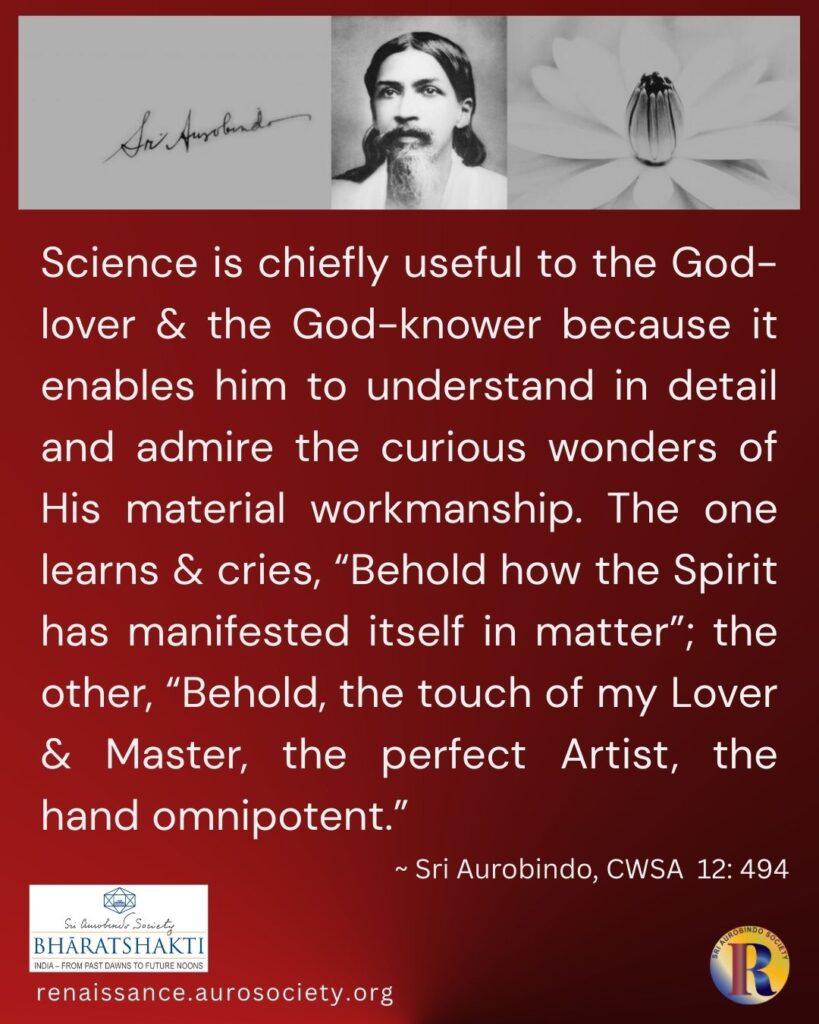
The euphoria was eventually replaced by disenchantment with science. What reinforced the disenchantment with science was, paradoxically, further developments in science itself. Theoretical Physics developed to a point where the smallest sub-atomic particles, called hadrons, were found to lack physical presence – they were merely a fascinating dance of energy. Solid matter that we can touch is actually empty! Science was baffled. The supreme confidence of science was rattled.
Science now conceded ignorance and found itself grappling with mystery. That is what made many physicists see that the scientific worldview was consistent with the spiritual worldview. In short, the failure of science to eliminate the problems of human existence, and its acknowledgement that spirituality is based on a worldview that is consistent with science, has led to the religion of the future. The author calls this religion of the future, the religion of wonder. In Sri Aurobindo’s language, the world has entered the age of supra-rational subjectivity. Starting with the ‘religion of enchantment’ of the distant past, and ending with the ‘religion of wonder’ of the future, the cycle is complete!
As the author says in the Introduction, this book is specially meant for those who do not feel at home with ritualistic worship and religious symbols, but have “a longing for something beyond,” have “an affinity for something higher and deeper and far removed from this mundane plane.” Such persons are neither atheists nor irreligious; what suits them is ‘the religion’ of wonder.
To quote a few lines that come towards the end of the book, “The Reality is hidden. … when we open our hearts and minds to the mystery that is all around, perhaps we would be granted glimpses of the One who is behind this magic show. … Till then we shall continue to be the faithful adherents of the Religion of Wonder. Only let our vision be sacred and pure. Let us be dumb-struck, baffled! Let us be awe-struck! Let our song arise in wonder!”
~ Post Design: Beloo Mehra

